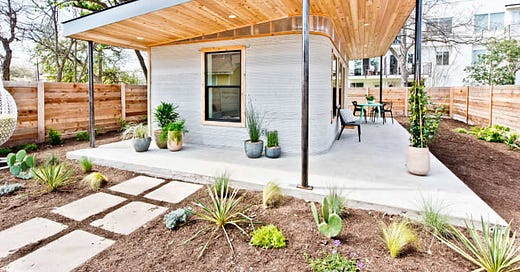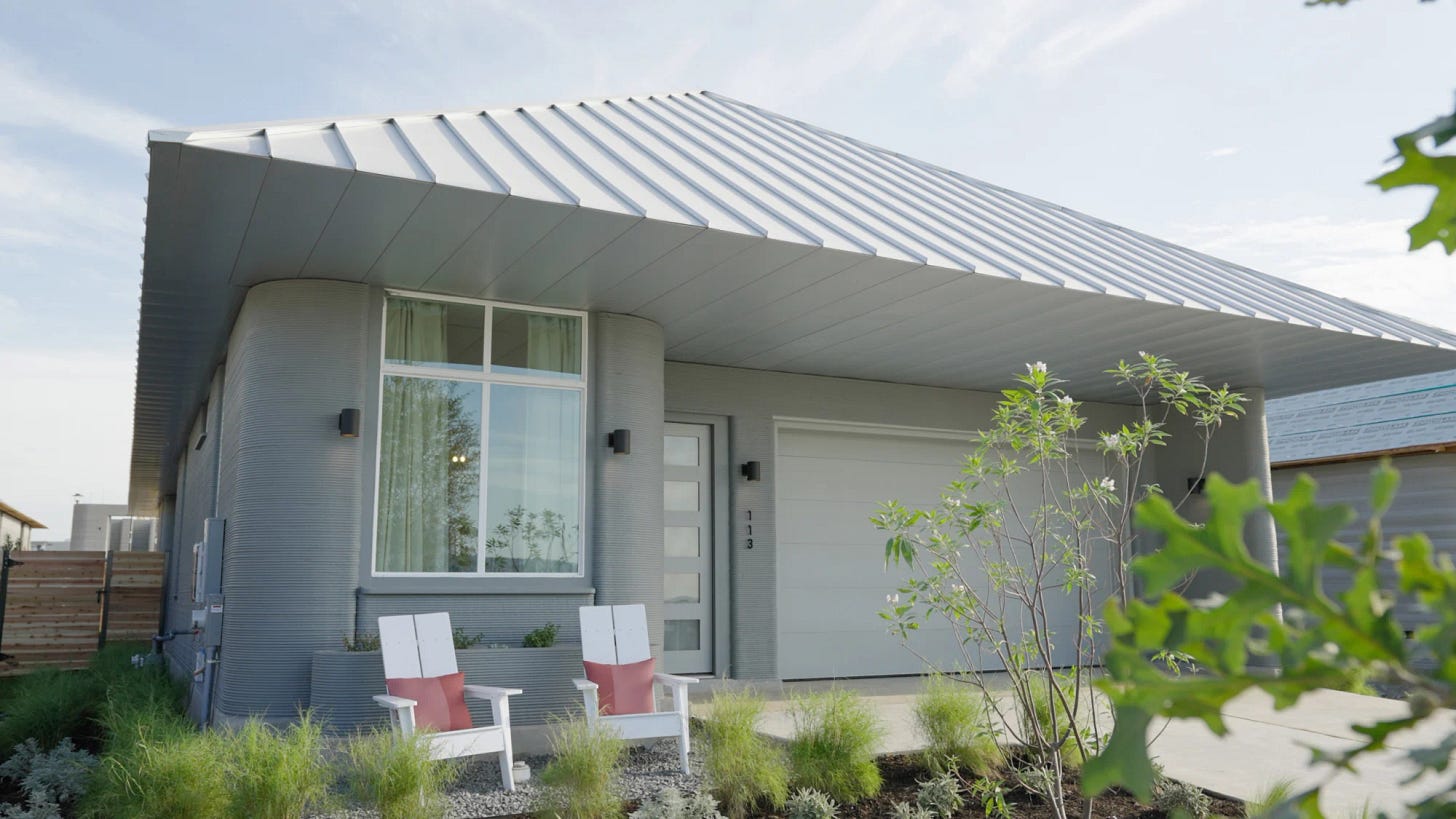2023 Was the Year 3D Printed Homes Hit the Mainstream
Are 3D printed homes a cutting-edge solution or scam?
Thanks for reading The New Urban Order — where urbanists explore the future of cities. The next two weeks I’ll be wrapping up the year before signing off for 2023. If you’ve enjoyed this newsletter, please consider upgrading before the year is done!
In the spring of 2018, a 3D printed home grabbed a ton of headlines. Built by Austin-based company ICON for SXSW, the tiny home reportedly cost just $10,000 to create. This one tiny home garnered a ton of attention, which turned into millions in investment for ICON. At a time when accessory dwelling unit (ADU) reform was sweeping California, many of us in the housing field wondered if the dire need for more affordable small-scale homes and 3D printing could make a perfect marriage. It sure seemed so.
Fast forward to 2023 and 3D printed homes have finally hit the mainstream. In the last few months, I’ve been seeing a ton of updates on 3D printed communities.
The highly anticipated collaboration between ICON, Lennar (one of the country’s largest homebuilders) and the architecture firm Bjarke Ingalls Group (BIG) is now under construction. Though 3D printing has been touted as a way to dramatically reduce costs, these homes come with a starting price of $470,000. ICON’s work was also the subject of a 60 Minutes episode.
An organization in Indianapolis announced it would build 2,000 3D printed homes.
There’s a collaboration between 3D printing company, Alquist, and Habitat for Humanity that is underway building 100 homes across several sites.
And there’s a steady drumbeat of headlines from countries like Australia, Indonesia, and Guatemala as they notch their first 3D printed homes.
Nearly all of the coverage asks: Could 3D printed homes solve the affordable housing crisis? There is a tantalizing prospect here. 3D printing has the potential to reduce construction time by about 80 percent. 3D printing could potentially be more sustainable, with less wasted material in the construction process. The concrete-based mixture used in 3D printed could be more energy efficient, hurricane resistant, and termite resistant than standard stick-built homes. The materials used in the 3D printing “beads” can also be reused or recycled. While there are concerns that 3D printing could eliminate construction jobs, it’s more likely the process would just supplement the major shortage of construction workers that is suppressing housing development today. A lot of these innovations could result in dramatic cost reduction for building housing.
For all these reasons, 66 percent of consumers and 75 percent of millennials would be open to living in a 3D printed home. Yet because of the cost of the upfront technology and the barriers to scale (which I’ll touch on below), only about two dozen companies that I’ve been able to find currently build 3D printed communities in the U.S.
But the more I look into 3D printed housing, the more I’m skeptical that 3D printing will be any more successful than prefab housing. Ten years ago Harvard Business Review claimed 3D printing would change the world. I don’t know about you, but I’ve still never used a 3D printer for anything. Designers might enjoy 3D printing for fast prototyping, but I’m not convinced regular people will use 3D printing on a regular basis— ever. I would have thought the pandemic, with its supply chain shortages, would have spurred a huge uptick in 3D printing, but it never did.
Just like regular 3D printing hasn’t become widely useful, I sense that the use case for 3D printed homes is similarly limited. Read on for more discussion of whether 3D printing can live up to the hype.






